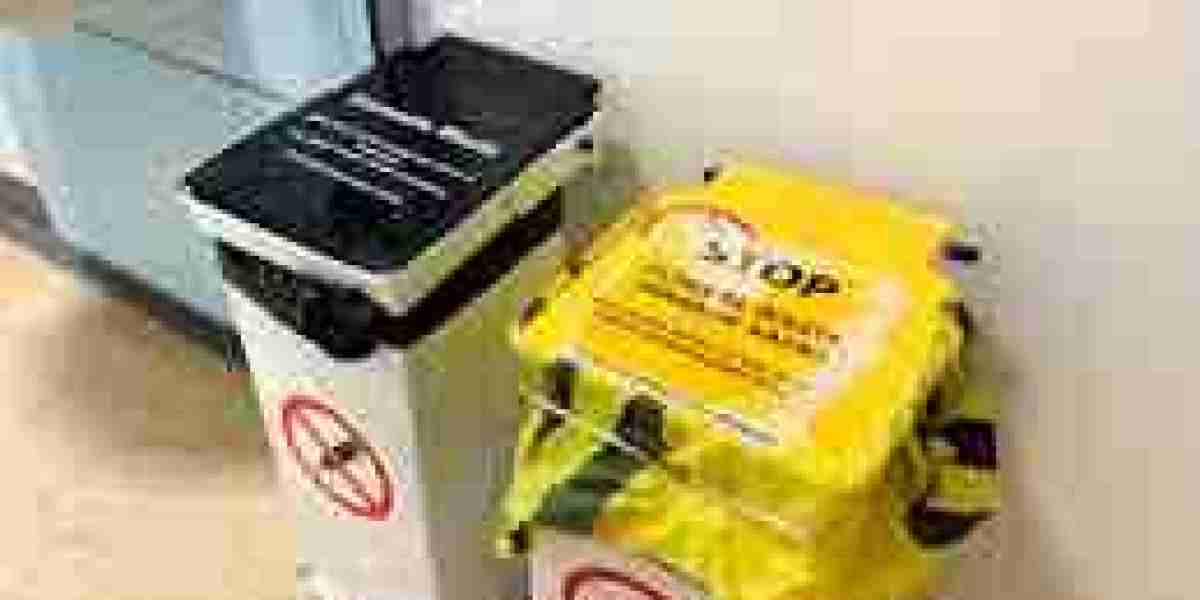In any healthcare facility, the proper disposal of clinical waste is an essential aspect of maintaining a safe and hygienic environment. Clinical waste refers to waste that is generated during the course of medical treatment, research, or the care of patients. This waste can be hazardous, infectious, and harmful to both people and the environment if not managed correctly. Therefore, healthcare providers must adhere to stringent guidelines and regulations to ensure the safe and responsible disposal of clinical waste.
In this article, we will explore why proper clinical waste disposal is crucial in healthcare facilities, the risks of improper disposal, the best practices for handling clinical waste, and the role of healthcare professionals in mitigating these risks.
1. Understanding Clinical Waste Disposal
Clinical waste disposal refers to the process of handling, treating, and disposing of waste materials that are generated by medical or healthcare activities. These materials include anything that has been contaminated by bodily fluids, tissues, or waste from patients undergoing medical procedures. Common examples of clinical waste include:
- Used needles and syringes
- Bandages and dressings
- Contaminated clothing and personal protective equipment (PPE)
- Blood-soaked items
- Pathological waste (e.g., tissue, organs, or bodily fluids)
- Pharmaceuticals and expired medicines
- Sharps (e.g., scalpels, lancets, and broken glass)
The key concern with clinical waste disposal is ensuring that these materials are discarded in a manner that does not pose a threat to human health, public safety, or the environment.
2. Health Risks of Improper Clinical Waste Disposal
If clinical waste is not disposed of correctly, it can lead to significant health risks for both healthcare workers and the general public. The dangers associated with improper waste disposal include:
Infection and Disease Transmission: Clinical waste, especially waste contaminated with bodily fluids or pathogens, poses a high risk of infection. If needles, syringes, or other sharp objects are not disposed of in appropriate containers, they can cause needle-stick injuries. This could potentially lead to the transmission of diseases such as HIV, hepatitis B, and hepatitis C.
Exposure to Toxic Chemicals: Some clinical waste materials, such as certain pharmaceuticals, chemicals, and disinfectants, can be toxic. Improper disposal of these substances can lead to poisoning, environmental contamination, or long-term health effects for those exposed to them.
Environmental Damage: The improper disposal of clinical waste, particularly in landfills or through incineration, can cause lasting environmental harm. For example, the leaching of toxic substances into groundwater or the release of harmful gases into the atmosphere can contribute to pollution and long-term ecological damage.
Legal and Financial Consequences: Healthcare facilities that fail to comply with local regulations on clinical waste disposal may face fines, legal action, or reputational damage. The costs of dealing with improper waste disposal can be enormous, especially if the waste contaminates a facility or environment, leading to expensive cleanup efforts.
3. Regulations and Standards for Clinical Waste Disposal
Many countries have established strict regulations and guidelines for clinical waste disposal to ensure the safety of healthcare workers, patients, and the general public. These regulations aim to reduce the risks associated with hazardous waste and protect the environment.
For instance, in the United States, the Occupational Safety and Health Administration (OSHA) and the Environmental Protection Agency (EPA) set forth rules for the management of clinical waste, including proper labeling, storage, and disposal practices. Similarly, the Health and Safety Executive (HSE) in the United Kingdom provides comprehensive guidelines on clinical waste management.
In addition to governmental regulations, healthcare facilities often need to follow best practices set forth by organizations such as the World Health Organization (WHO) and the International Safety Center to ensure compliance with international standards for waste disposal.
One of the key elements in these regulations is the segregation of clinical waste. Healthcare providers must categorize waste into different categories based on its risk level. For example:
- Infectious waste: Waste that contains pathogens that can cause disease.
- Sharps waste: Items such as needles and syringes that can cause injury or transmit infections.
- Pharmaceutical waste: Expired or unused medications that are harmful to the environment.
- Hazardous waste: Materials that are toxic, flammable, or reactive.
By following these classifications, healthcare facilities can ensure that each type of waste is treated and disposed of in the most appropriate and safest way.
4. Best Practices for Proper Clinical Waste Disposal
To prevent the dangers of improper clinical waste disposal, healthcare facilities should adopt best practices that focus on safety, efficiency, and environmental responsibility. These practices include:
Segregation and Labeling: Waste must be segregated at the point of origin (e.g., patient rooms, operating theaters, or laboratories). Different types of clinical waste should be placed in separate containers, which should be clearly labeled with the appropriate hazard symbols. This helps to avoid cross-contamination and ensures that each type of waste is treated correctly.
Use of Secure Containers: Clinical waste containers should be puncture-resistant and leak-proof. Sharps, in particular, should be disposed of in specially designed containers that prevent accidental injury or spills. These containers should be sealed tightly to avoid contamination and should be replaced regularly to avoid overflow.
Storage and Transportation: Once waste is collected, it should be stored in a secure area until it is transported for treatment or disposal. This storage area should be properly ventilated, locked, and separated from other areas where food or patient care occurs. Waste should be transported to treatment facilities in sealed containers to prevent exposure to workers and the public.
Treatment Methods: There are various methods for treating clinical waste, depending on the type of waste and its associated risks. Common treatment methods include:
- Autoclaving: A high-pressure steam sterilization process used to treat infectious waste.
- Incineration: A process that involves burning waste at high temperatures to destroy harmful microorganisms and reduce volume.
- Chemical Disinfection: The use of chemicals to neutralize or destroy pathogens in liquid waste.
Employee Training and Awareness: Healthcare workers should receive regular training on proper clinical waste disposal procedures, including the importance of waste segregation, handling techniques, and emergency procedures. Training ensures that all employees are aware of the risks and are equipped to handle waste safely.
Regular Audits and Inspections: Healthcare facilities should conduct regular audits and inspections to ensure compliance with waste disposal regulations and to identify areas for improvement. By monitoring waste management practices, facilities can maintain high standards and minimize the risks associated with clinical waste.
5. The Role of Healthcare Professionals
Healthcare professionals play a critical role in ensuring that clinical waste is managed and disposed of properly. They are often the first point of contact for waste generation and are responsible for implementing the proper procedures. Healthcare workers must be vigilant in identifying the different types of clinical waste and ensure that it is disposed of correctly.
Additionally, healthcare professionals should encourage a culture of safety and responsibility by promoting waste minimization strategies. For example, reusing medical equipment where safe and possible or opting for safer alternatives to hazardous materials can help reduce the volume of clinical waste produced.
By adhering to best practices and regulations, healthcare professionals can help mitigate the health and environmental risks associated with clinical waste and contribute to the overall safety and well-being of patients, staff, and the community.
6. Conclusion
The importance of proper clinical waste disposal in healthcare facilities cannot be overstated. It is essential for safeguarding public health, protecting the environment, and maintaining compliance with legal and ethical standards. Healthcare facilities must implement robust waste management systems that focus on proper segregation, secure containment, safe treatment, and regular training of staff.








